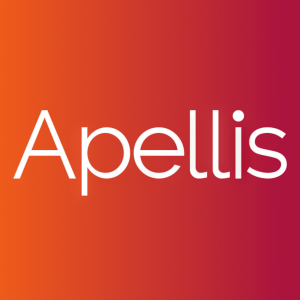Apellis Receives Permanent J-Code (J2781) for SYFOVRE® (pegcetacoplan injection), Effective October 1, 2023
- Permanent J-code will ensure accurate and efficient reimbursement of SYFOVRE in all treatment settings
- None.
Insights
Analyzing...
WALTHAM, Mass., Sept. 25, 2023 (GLOBE NEWSWIRE) -- Apellis Pharmaceuticals, Inc. (Nasdaq: APLS) today announced that the U.S. Centers for Medicare & Medicaid Services (CMS) has assigned a permanent and product-specific J-code (J2781) for SYFOVRE® (pegcetacoplan injection), the first-ever treatment for geographic atrophy (GA) secondary to age-related macular degeneration. The J-code for SYFOVRE will become effective on October 1, 2023.
"Until SYFOVRE, patients had nothing to slow the progression of this relentless and irreversible disease,” said Adam Townsend, chief commercial officer, Apellis. “The permanent J-code is a significant milestone that will help ensure accurate and efficient reimbursement of SYFOVRE in all treatment settings, building on our goal of bringing this important treatment to GA patients in need.”
J-codes are permanent reimbursement codes used by government payers and commercial insurers to facilitate billing of Medicare Part B treatments, which must be administered by a healthcare professional. J-codes simplify and streamline the billing and reimbursement processes, allowing for efficient claims processing.
The permanent J-code has been published by CMS here.
About Geographic Atrophy (GA)
Geographic atrophy (GA) is an advanced form of age-related macular degeneration and a leading cause of blindness worldwide, impacting more than one million Americans and five million people worldwide.1,2 It is a progressive and irreversible disease caused by the growth of lesions, which destroy the retinal cells responsible for vision. The vision loss caused by GA severely impairs independence and quality of life by making it difficult to participate in daily activities. On average, it takes only 2.5 years for GA lesions to start impacting the fovea, which is responsible for central vision.3
About SYFOVRE® (pegcetacoplan injection)
SYFOVRE® (pegcetacoplan injection) is the first-ever treatment for geographic atrophy (GA). By targeting C3, SYFOVRE is designed to provide comprehensive control of the complement cascade, part of the body’s immune system. SYFOVRE is approved in the United States for the treatment of GA secondary to age-related macular degeneration.
U.S. Important Safety Information for SYFOVRE® (pegcetacoplan injection)
CONTRAINDICATIONS
- SYFOVRE is contraindicated in patients with ocular or periocular infections, and in patients with active intraocular inflammation
WARNINGS AND PRECAUTIONS
- Endophthalmitis and Retinal Detachments
- Intravitreal injections, including those with SYFOVRE, may be associated with endophthalmitis and retinal detachments. Proper aseptic injection technique must always be used when administering SYFOVRE to minimize the risk of endophthalmitis. Patients should be instructed to report any symptoms suggestive of endophthalmitis or retinal detachment without delay and should be managed appropriately.
- Neovascular AMD
- In clinical trials, use of SYFOVRE was associated with increased rates of neovascular (wet) AMD or choroidal neovascularization (
12% when administered monthly,7% when administered every other month and3% in the control group) by Month 24. Patients receiving SYFOVRE should be monitored for signs of neovascular AMD. In case anti-Vascular Endothelial Growth Factor (anti-VEGF) is required, it should be given separately from SYFOVRE administration.
- In clinical trials, use of SYFOVRE was associated with increased rates of neovascular (wet) AMD or choroidal neovascularization (
- Intraocular Inflammation
- In clinical trials, use of SYFOVRE was associated with episodes of intraocular inflammation including: vitritis, vitreal cells, iridocyclitis, uveitis, anterior chamber cells, iritis, and anterior chamber flare. After inflammation resolves, patients may resume treatment with SYFOVRE.
- Increased Intraocular Pressure
- Acute increase in IOP may occur within minutes of any intravitreal injection, including with SYFOVRE. Perfusion of the optic nerve head should be monitored following the injection and managed as needed.
ADVERSE REACTIONS
- Most common adverse reactions (incidence ≥
5% ) are ocular discomfort, neovascular age-related macular degeneration, vitreous floaters, conjunctival hemorrhage.
Please see accompanying full Prescribing Information for more information.
About Apellis
Apellis Pharmaceuticals, Inc. is a global biopharmaceutical company that combines courageous science and compassion to develop life-changing therapies for some of the most challenging diseases patients face. We ushered in the first new class of complement medicine in 15 years and now have two approved medicines targeting C3. These include the first-ever therapy for geographic atrophy, a leading cause of blindness around the world. With nearly a dozen clinical and pre-clinical programs underway, we believe we have only begun to unlock the potential of targeting C3 across many serious diseases. For more information, please visit http://apellis.com or follow us on Twitter and LinkedIn.
Apellis Forward-Looking Statement
Statements in this press release about future expectations, plans and prospects, as well as any other statements regarding matters that are not historical facts, may constitute “forward-looking statements” within the meaning of The Private Securities Litigation Reform Act of 1995. The words “anticipate,” “believe,” “continue,” “could,” “estimate,” “expect,” “intend,” “may,” “plan,” “potential,” “predict,” “project,” “should,” “target,” “will,” “would” and similar expressions are intended to identify forward-looking statements, although not all forward-looking statements contain these identifying words. Actual results may differ materially from those indicated by such forward-looking statements as a result of various important factors discussed in the “Risk Factors” section of Apellis’ Annual Report on Form 10-K with the Securities and Exchange Commission on February 21, 2023 and the risks described in other filings that Apellis may make with the Securities and Exchange Commission. Any forward-looking statements contained in this press release speak only as of the date hereof, and Apellis specifically disclaims any obligation to update any forward-looking statement, whether as a result of new information, future events or otherwise.
Media Contact:
Lissa Pavluk
media@apellis.com
617.977.6764
Investor Contact:
Meredith Kaya
meredith.kaya@apellis.com
617.599.8178
1 Rudnicka AR, Jarrar Z, Wormald R, et al. Age and gender variations in age-related macular degeneration prevalence in populations of European ancestry: a meta analysis. Ophthalmology 2012;119:571–580.
2 Wong WL, Su X, Li X, et al. Global prevalence of age-related macular degeneration and disease burden projection for 2020 and 2040: a systematic review and meta-analysis. Lancet Glob Health 2014;2:e106–116.
3 Lindblad AS, et al, and AREDS Research Group. Arch Ophthalmol. 2009;127(9):1168-1174.








